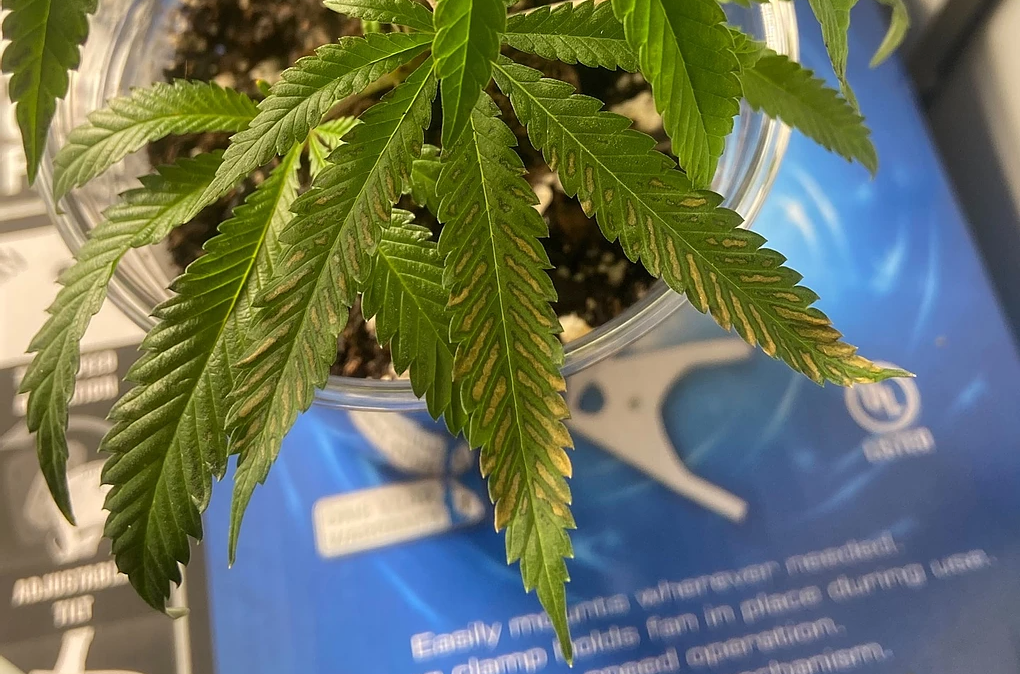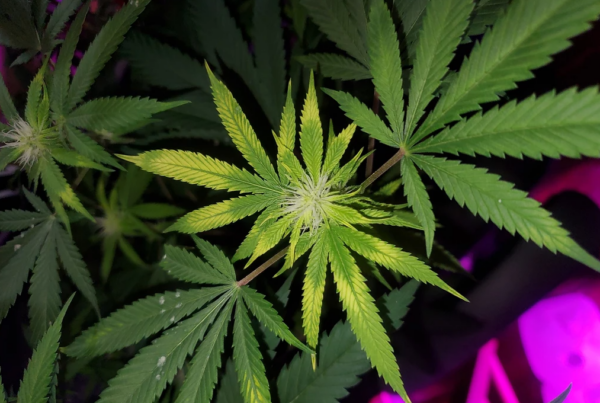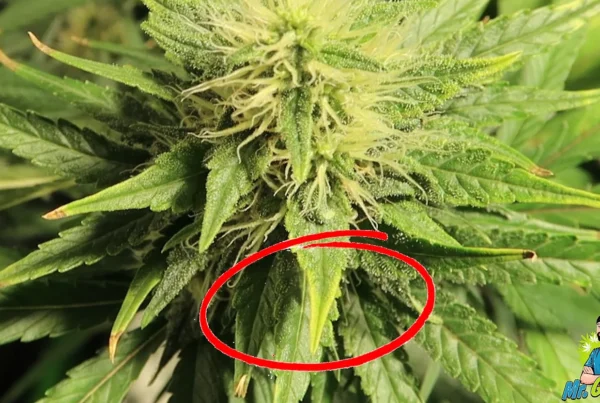Cannabis growers can run into various problems throughout their journey. Some examples are nutrient deficiencies, stunted growth, and pests. One common contributing factor to problems is incorrect pH. If the pH is not in the proper range, nutrients can get locked out and cannabis plants can become weaker – leading to increased vulnerability to pests and pathogens. Therefore, it is very important to keep the pH balanced for your cannabis plant to thrive. But how do you detect the problem with pH and how do you fix it? This guide will provide you with all of the answers that you are looking for.
pH Fluctuations Indicator
One indicator that points straight to pH fluctuation is brown or tan spotting on the leaves. pH fluctuations stress the plant and result in these visible tan, bronze, or brown spots or patches spreading on the leaves.
Although this can be symptoms of other issues like root rot, it is recommended to eliminate pH fluctuations as the cause before checking for other problems. Although this problem is more prevalent in soilless mediums or hydroponic systems, it can happen in a soil-based medium too. The pH does not necessarily have to stay at one perfect point. As plants excrete acids to uptake nutrients, the pH is bound to go up and down. Although, there is a specific range that you as a grower should keep it in to ensure proper nutrient uptake. Now that you know how important it is to avoid pH fluctuations, it’s time to learn how to manage it with various tools and tips.
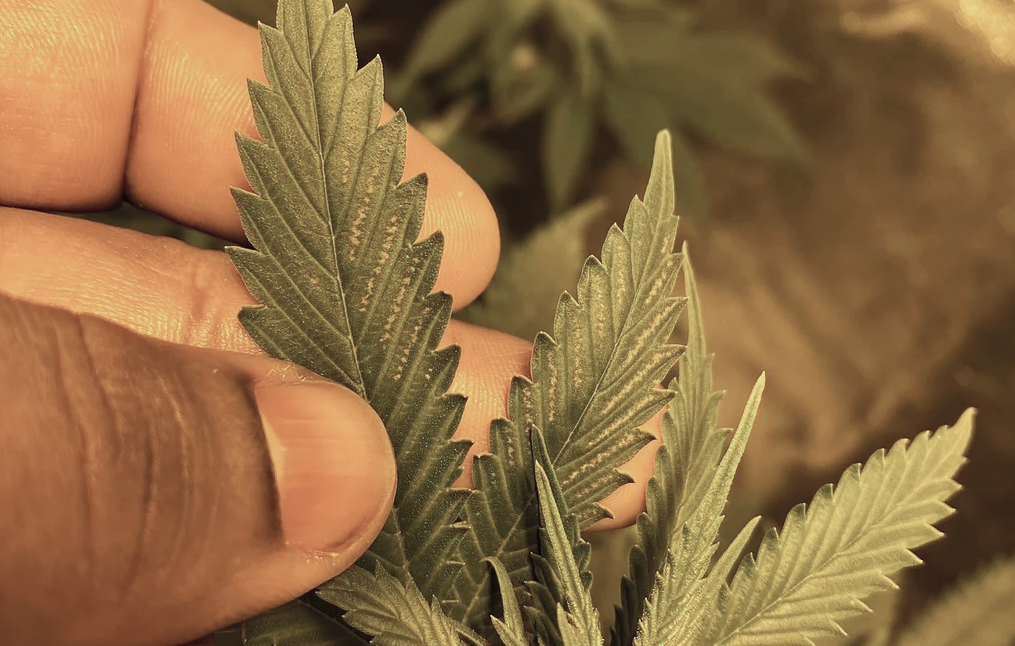
What is pH?
If you are a novice grower, you may be wondering what pH even is and why do you need to manage it in the first place. Your question is valid! pH is an acronym for, “potential of hydrogen” and it is used to determine the acidity or alkalinity of a solution – based on a scale that ranges from 1 to 14. On this scale, 7 is considered neutral; anything below 7 is acidic and anything above 7 is alkaline.
Cannabis plants thrive when the pH in the growing medium lies in a specific range. This range is on the acidic side of the spectrum. If the pH is not in the optimal range, plants will be unable to uptake certain nutrients which can lead to a plethora of unwanted problems. Therefore, as a grower, you should learn to manage the pH in the medium to ensure that your cannabis plants get all of the required nutrients and stay healthy.
How to Manage pH?
As you learn about the tools and ways to manage pH, you should keep in mind the optimal pH range for cannabis plants. The optimal range depends on the medium that you are growing in. Below are safe pH ranges that you can stay in which will aid to achieve proper nutrient uptake:
- Soil – Between 6.0 and 7.0 pH
- Soilless/Coco/Hydroponic – Between 5.5 and 6.5 pH
A range is recommended because different nutrients are absorbed best at different pH levels, therefore, you should not focus on keeping the pH at one point. There is a two-step process of maintaining pH levels – testing and adjusting.
Testing pH
To test the pH levels, you will need a tool. Commonly used and readily available tools for testing pH levels are:
- Digital pH pens (also called pH meters and pH testers)
- pH Measurement Kit
You can also purchase a multiparameter or a soil meter that gives you measurements beyond pH. Most meters that measure pH are very accurate and easier to use than strips and other instruments. Most pH pens require batteries. Besides purchasing batteries, you should consider purchasing distilled water to keep the electrodes clean – resulting in accurate measurements. Alternatively, you can use kits or strips as they are cheap, although, they do not give the most accurate results.
When growing in soil, many growers will measure the pH of the nutrient solution or water prior to giving it to the plant. That is a good measurement to have in mind but it is more so advised to measure the pH of the runoff. What is runoff? It’s the liquid that comes out from the bottom of the grow pot. Often times the runoff pH will be different than the pH of the water or nutrient solution going in. It’s the pH of the soil that matters most and measuring the runoff gives you a more accurate picture of what the pH is in the soil.
When growing in coco coir, many growers ignore the runoff pH and will only focus on adjusting the pH of the nutrient solution – prior to feeding the plant. Coco coir buffers the pH so often times your runoff measurement will be higher than the solution that you put in. I personally like to adjust my water or nutrient solution to 5.8 pH every time I water or feed my plants in coco coir.
Adjusting pH
To adjust pH, you can purchase solutions from the store or use home remedies. pH Up solution is recommended when the pH is too low and pH down solution is recommended when the pH is too high. Other home remedies include baking soda, sodium bicarbonate, potassium bicarbonate, and vinegar.
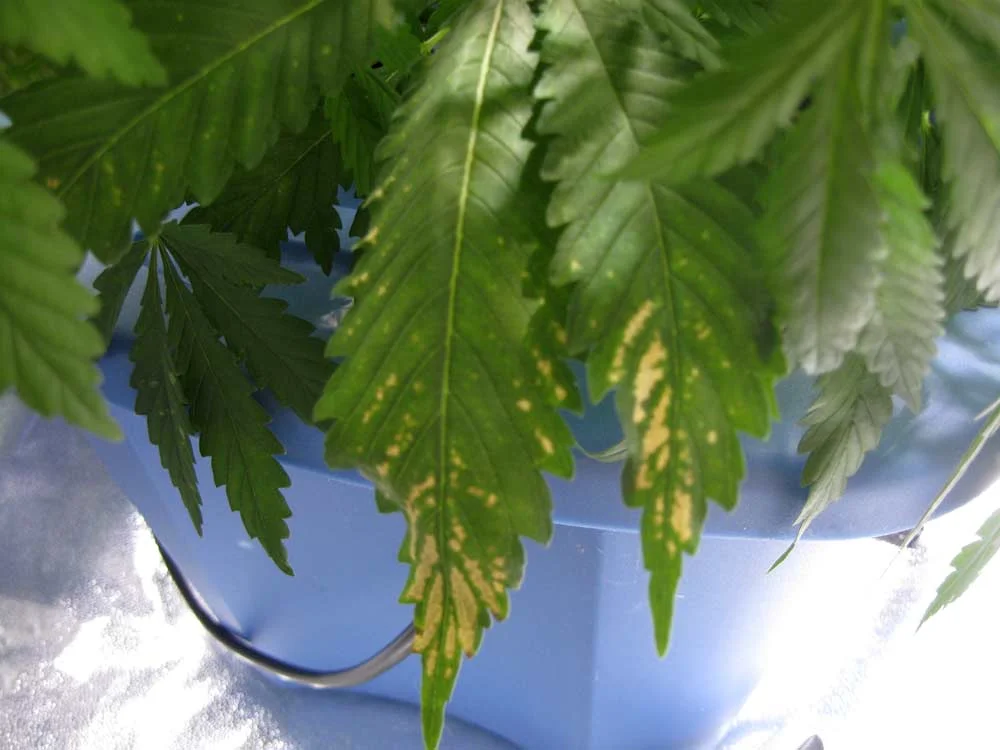
Using Adjustment Solutions
How much solution do you use to adjust the pH? This guide will give you a general idea of how to use pH Up and pH Down solutions properly. Note: If you use RO water then you will need less amount of these solutions.
Using pH Down
- Amount: 1mL of solution per gallon of water (use a blunt-tip syringe for accurate measurements)
- It will lower the pH by 1 unit
Using pH Up
- Amount: Use 2 to 4 mL of solution per gallon of water
- It will raise the pH by 1 unit
It is recommended to use a small amount of these solutions and gradually increase use. When feeding water to the plants, tap water will benefit you more in terms of pH balance as it has minerals in it which keeps the pH from swinging too high or low which is highly likely in RO, distilled, or soft water.
You are now ready to deal with pH fluctuations. Just follow this two-step process and your plant will be on track for recovery. The previously damaged leaves will not recover, although, you will see improvement in new growth.
![]()

